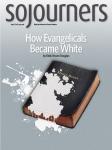THE TONYA HARDING saga was a Great American Novel of the 1990s waiting to be written—equal parts Theodore Dreiser and Three Stooges. Harding was the impoverished striver who muscled her way to the top of the hoity-toity world of women’s figure skating, only to be disgraced when her ex-husband’s buffoonish associates carried out a bizarre assault on a rival skater, Nancy Kerrigan.
The film I, Tonya delivers this story well, both as tragedy and as farce. It shows us the particular violence of frustrated hopes, malnourished emotions, and internalized self-hatred that passes from generation to generation like a plague in the lives of poor white people in America.
In 1972, when Tonya Harding was 2 years old, sociologist Richard Sennett and Jonathan Cobb published a book called The Hidden Injuries of Class. That phrase kept running through my mind as I watched I, Tonya. Sennett and Cobb profiled white working-class Americans who felt the pain of being disrespected and looked down upon, yet couldn’t help blaming themselves for that fact. One of their interviewees remarked, “I really didn’t have it upstairs to do satisfying work.”
Less than two years after Sennett’s book arrived, LaVona Golden, a foul-mouthed, chain-smoking wraith of a waitress (played by Allison Janney), intimidated a WASPy skating teacher into taking her daughter Tonya as a student. From that point on, in the movie, the girl’s life is blur of skating and abuse. Her mother torments her into giving her best on the ice, but comes up empty on empathy or affection. And the abuse gets physical. As a teenager (played by Margot Robbie), Tonya moves out to live with her boyfriend and ex-husband-to-be, Jeff Gillooly, and he hits her too.
Violence was not alien to young Tonya, who grew up shooting rabbits with her father. When Gillooly hits her, she hits back. When her mother throws a steak knife at her that sticks in her arm, she pulls the bloody knife out and holds it for a long moment, locking her mother in a steely gaze, before finally laying it on the table. The mother doesn’t even acknowledge the incident, much less apologize.
Screenwriter Steven Rogers and director Craig Gillespie walk a fine line in I, Tonya, demonstrating the harsh cruelty of some characters and the outlandish absurdity of others without seeming to belittle them. They mostly succeed, even with Harding’s self-appointed bodyguard, Shawn Eckhardt, and his stooges who pull off the Kerrigan hit. Janney certainly shows us that even Golden had her reasons when she stands in the middle of the diner where she works, coffee pot in hand, glued to the wall-mounted TV, just waiting to see her daughter’s face light up at the end of her routine.
I, Tonya also reminds us that this story was part of the dawning of round-the-clock tabloid media. In the film, a reporter for the ’90s gossip-and-gore syndicated TV show Hard Copy explains that cable news and a new thing called the internet had created an insatiable demand for sensationalism. Shows like his did the stuff the mainstream media looked down on, he says, “then became.”
In an especially telling visual commentary near the end of the movie, as the last TV station van pulls away from Gillooly’s front yard, on the TV screen in his living room we see the image of an accused murderer named O.J. Simpson.
The American tragedy here is that LaVona Golden and Tonya Harding, like most Americans, believed that if you work hard enough, you can rise above your origins and achieve your dreams. Nobody worked harder than Tonya Harding, but in the end there was no room for her at the top. In the movie, a skating judge essentially tells her that the system is rigged against people like her.
And so it still is.

Got something to say about what you're reading? We value your feedback!

